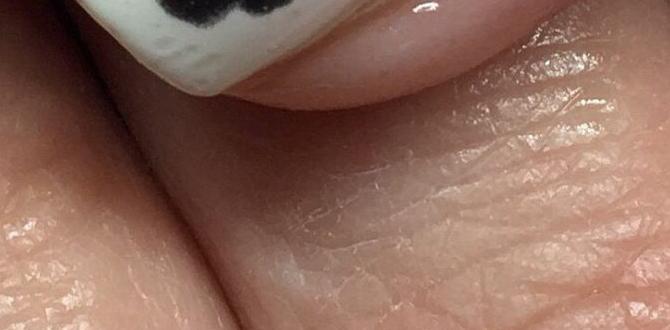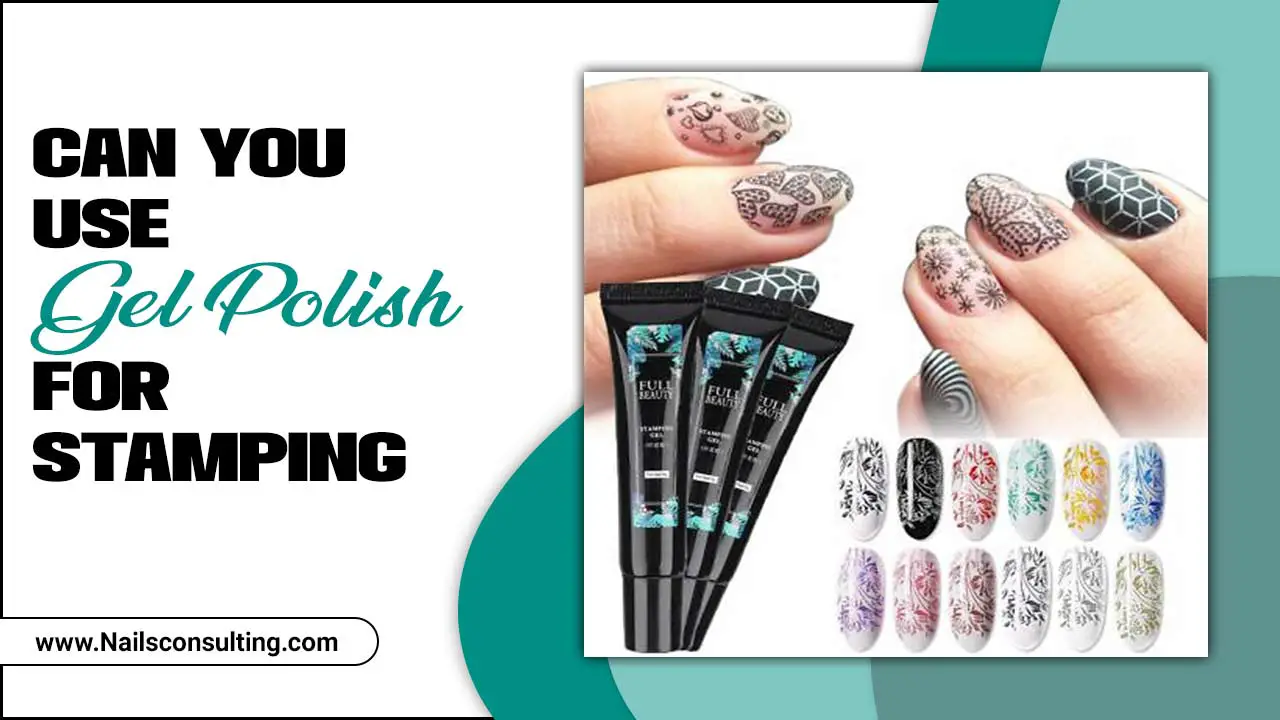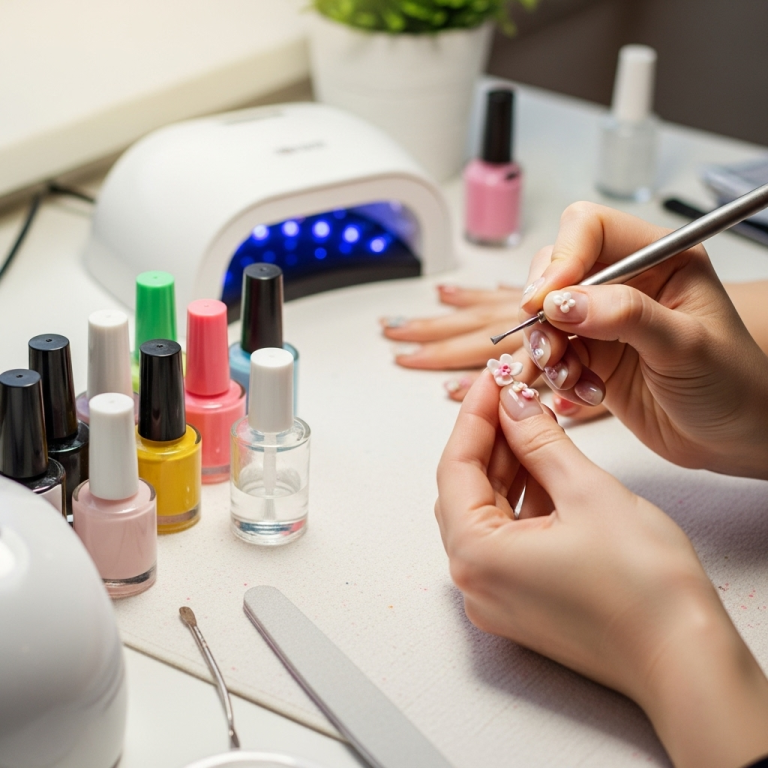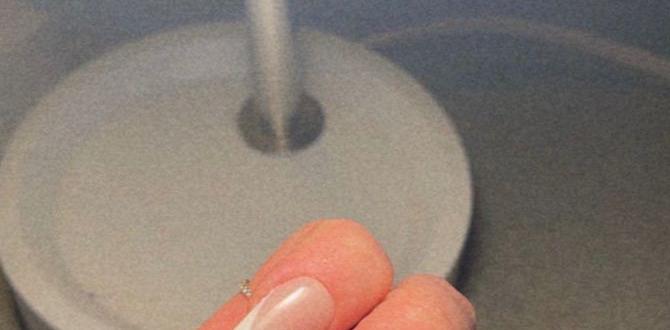Quick Summary: Natural ombre nail designs blend soft, gradient colors for a chic, effortless look. Perfect for beginners, achieving this beautiful effect at home is simple with just a few tools and a bit of practice. Get salon-worthy nails with our easy-to-follow guide!
Hey nail lovers! Lisa Drew here from Nailerguy, and I’m so excited to talk about a nail trend that’s as beautiful as it is easy: natural ombre nails. Ever look at perfectly blended nails and think, “There’s no way I can do that at home”? I get it! Many of us dream of that seamless color transition, but the thought of achieving it can feel intimidating. The good news? Natural ombre isn’t complicated at all! It’s like magic for your fingertips, adding a touch of elegance that goes with everything. We’ll break down exactly how to get this gorgeous look without any fuss. Ready to transform your nails?
Why Natural Ombre Nails Are Your New Go-To
Natural ombre nails are the epitome of understated chic. Think soft transitions from a nude base to a slightly lighter shade, or a gentle blush pink fading into a peachy hue. They’re the manicure equivalent of a perfect nude lipstick – universally flattering and always in style. Unlike bold, graphic designs, natural ombre offers a subtle sophistication that’s perfect for any occasion, from a busy workday to a special event.
What makes them so amazing for beginners? They’re forgiving! The blended nature of ombre means minor imperfections are easily hidden. Plus, the “natural” palette means you don’t need a rainbow of colors, just a few complementary shades. This minimizes your investment in supplies and simplifies the process, making it totally achievable for anyone. Let’s dive into how you can create this effortless beauty right at home.
Essential Tools for Your Natural Ombre Manicure
Before we get our hands dirty, let’s gather our tools! Don’t worry, you probably have most of these already, and if not, they are easy to find at your local drugstore or beauty supply store. Having the right kit makes the entire process smoother and the results so much better.
- Base Coat: Prepares your nails and helps polish adhere better.
- Top Coat: Seals your design and adds a glossy finish, preventing chipping.
- Nail Polish Colors: Choose 2-3 complementary shades. For a natural look, think nudes, soft pinks, peaches, light browns, or creamy whites.
- Cosmetic Sponge or Makeup Sponge: A clean, dense sponge is key for blending the colors. You can cut a regular makeup sponge into smaller pieces.
- Small Dish or Palette: To place your polish colors for easy access.
- Cuticle Oil: To nourish your cuticles after the manicure.
- Cotton Pads and Nail Polish Remover: For cleaning up any polish that gets on your skin.
- Buffer Block (Optional): For smoothing the nail surface before you start.
Having these on hand means you’re ready to create a professional-looking ombre without a trip to the salon. For tips on choosing the best nail polish colors that suit your skin tone, you can explore resources like this guide on Cosmopolitan’s guide to nail polish colors for your skin tone.
Step-by-Step Guide to Natural Ombre Nails
Ready to create that beautiful gradient? Let’s get started! This method is super forgiving and perfect for your first try.
Step 1: Prep Your Nails
Clean nails are happy nails! Start by removing any old polish. Then, gently push back your cuticles. If your nails are uneven, a light buffing with your buffer block can create a smooth canvas. Make sure your nails are completely dry before applying polish.
Step 2: Apply Base Coat
A good base coat is essential. It protects your natural nails from staining and provides a smooth surface for the polish. Apply one thin layer and let it dry completely.
Step 3: Apply Your First Color
This will be the darkest or base color of your ombre. Apply one thin coat to all your nails. Don’t worry if it’s not perfectly opaque; you’ll likely apply a second coat later. Let this layer dry for a minute or two.
Step 4: Prepare Your Sponge
This is where the magic happens! Take your cosmetic sponge and cut it into a manageable size, maybe 2-3 smaller wedges. You want it to be easy to hold and apply directly to your nail. Some people like to slightly dampen their sponge; this can help with smoother blending, but it’s optional.
Step 5: Layer Your Colors on the Sponge
On your small dish or palette, create stripes of your chosen nail polish colors. For a natural ombre, let’s say we’re using a soft beige and a slightly lighter cream. Place the beige polish first, then right next to it, place the cream polish. You want the colors to be touching slightly so they can blend.
Pro Tip: Don’t put too much polish on the sponge, or it will become gloopy. A little goes a long way!
Step 6: Blend the Colors
Now, gently dab the sponge onto your palette where the colors meet. Roll the sponge back and forth just a tiny bit to encourage the colors to blend together on the sponge. You’re aiming for a smooth gradient line right on the sponge.
Step 7: Apply the Ombre to Your Nail
This is the fun part! Take your sponge with the blended colors and gently press or dab it onto your nail. Start at the base of your nail (where you want the darker color to be) and dab upwards, allowing the colors to transfer. You might need to dab a few times to build up the opacity. For a more diffused blend, you can gently roll the sponge across the nail.
Tip: For a more seamless blend, you can apply your base color (the darker one) to the nail first, let it dry, and then apply the gradient with the sponge, starting from the cuticle area and dabbing outwards.
Step 8: Reapply and Refine
After the first application, you’ll start to see the ombre effect. If the colors aren’t blended enough or are too sheer, repeat steps 5-7. Apply another thin layer of polish to the sponge, blend, and dab onto your nail. You can also use a clean part of the sponge to lightly dab at the transition line for a smoother finish.
Step 9: Clean Up Edges
Once you’re happy with the ombre, it’s time for cleanup. Dip a small brush (an old, clean makeup brush works perfectly) or a toothpick into nail polish remover and carefully trace around your cuticle and nail edge to remove any excess polish. This step makes a huge difference in achieving a polished look.
Step 10: Apply Top Coat
Once your ombre design is completely dry, apply a good quality top coat. This not only seals your design and adds a beautiful shine but also helps to smooth out any slight texture from the sponge application. Make sure to cap the free edge of your nail by running the brush along the tip.
Step 11: Moisturize!
After your top coat is dry, apply some cuticle oil to your cuticles and massage it in. This replenishes moisture and makes your manicure look even more professional and healthy.
Tips for Perfect Natural Ombre
Achieving natural ombre nails is all about practice and a few key tricks. Here are some tips to help you master the technique:
- Work Quickly: Nail polish dries fast! Have everything ready before you start applying polish to the sponge.
- Light Pressure is Key: Don’t press down too hard with the sponge. Gentle dabbing builds color and blend gradually.
- Layering is Your Friend: It’s better to build up the color and blend in thin layers than to try and get it perfect in one go.
- Experiment with Color Combos: Don’t be afraid to try different natural shades. A classic is nude to white, but a soft pink to peach is also gorgeous!
- Keep Your Sponge Clean: If you’re doing multiple nails, periodically clean off excess polish from your sponge, or use a fresh piece.
- Don’t Forget the Cleanup: That little bit of cleanup around the edges really elevates the final look.
Ombre Techniques for Different Looks
While the sponge method is fantastic for beginners, there are a couple of other ways to achieve a natural ombre look, each offering a slightly different finish. Knowing these can help you get creative!
The Brush-Only Blend
This method is perfect if you don’t have a sponge handy or prefer a more “painted” look. You’ll need a fine-tipped brush (a clean makeup brush or a specialized nail art brush).
- Apply your base color to the entire nail and let it dry.
- Apply your second color only to the tip of the nail, or to the area where you want the color to transition.
- Dip your brush in a nail polish thinner or a bit of nail polish remover (use sparingly!). Quickly and gently blend the line where the two colors meet. Work fast!
- Add a thin layer of your base color to the entire nail again to further smooth the transition and seal the blend. Let dry.
- Apply top coat.
The key here is speed and a very light touch. Too much blending can muddy the colors.
The Gradient Polish (if you’re lucky!)
Some brands offer “ombre” or gradient polishes that already have the colors blended in the bottle. These are incredibly easy to use – you just paint them on like a regular polish!
However, for a more controlled and customizable natural ombre, the sponge or brush methods are generally preferred. The beauty of DIY is having full control over the color payoff and blend.
Natural Ombre Nail Design Ideas for Everyday Wear
The beauty of natural ombre lies in its versatility. It’s not just about a soft fade; it’s about creating a refined look that enhances your natural beauty. Here are some ideas specifically tailored for everyday wear:
1. The Classic Nude Fade
This involves fading from a deeper nude at the cuticle to a lighter, almost milky nude or sheer white at the tip. It’s incredibly chic and elongates the fingers.
2. Soft Pink to Beige
A romantic and feminine option. Start with a soft, muted pink at the base and blend into a creamy beige or light tan at the tips. This is perfect for a polished work look.
3. Peachy Keen
Blend a soft peachy coral with a creamy nude or ivory. This gives a healthy, sun-kissed look that’s subtle yet vibrant.
4. Milky White Ombre
This design uses varying shades of off-white and milky pastels. Think a barely-there pink, a hint of pale lavender, or a soft mint green fading into an opaque milky white. It’s very modern and clean.
5. Subtle Shimmer Ombre
Add a clear polish with a fine shimmer or pearl finish over your natural ombre. Apply it sparsely to the tips, or use it as a top coat for a delicate sparkle that catches the light.
When choosing your colors, consider your undertones. For example, olive undertones often look great with warmer peaches and beiges, while cooler undertones might prefer softer pinks and mauves. Websites like Healthline offer guides on finding your skin undertone to help you pick the most flattering shades.
Maintaining Your Natural Ombre Nails
Once you’ve achieved your beautiful natural ombre look, you’ll want it to last! Here’s how to keep them looking fresh:
- Reapply Top Coat: Every 2-3 days, apply a fresh layer of top coat to reinforce your manicure and add shine.
- Wear Gloves: When doing chores, washing dishes, or any activity that involves prolonged contact with water or chemicals, wear gloves. This is crucial for preventing chipping and lifting.
- Moisturize Regularly: Keep your hands and cuticles hydrated with lotion and cuticle oil. Dryness can lead to hangnails and can make your polish look dull.
- Avoid Using Nails as Tools: Resist the urge to use your nails to open cans, scrape things, or peel labels. This is a sure way to chip or break them.
- Touch-Ups if Needed: If you notice a tiny chip or a spot that’s started to lift, you can sometimes carefully apply a tiny bit of top coat to smooth it over. For more significant issues, it might be time for a refresh.
A well-maintained manicure can last anywhere from 7 to 14 days, depending on your nail health and daily activities.
Pros and Cons of Natural Ombre Nails
Like any nail trend, natural ombre has its advantages and disadvantages. Understanding these can help you decide if it’s the right look for you.
| Pros | Cons |
|---|---|
| Effortless Elegance: Offers a sophisticated, polished look. | Can be Tricky at First: Blending takes a little practice for beginners. |
| Universally Flattering: Soft, neutral tones suit most skin tones. | Requires Patience: Building up the gradient can take time. |
| Versatile: Pairs well with any outfit or occasion. | Potential for Mess: Sponges can sometimes lead to polish on the skin. |
| Forgiving for Mistakes: The blended nature hides minor imperfections. | Sponge Can Get Messy: You might use up a few sponge pieces. |
| Beginner-Friendly Concept: Simple colors and blending techniques are easy to learn. | Cleanup is Essential: Requires careful cleaning around the edges for a professional finish. |
Frequently Asked Questions About Natural Ombre Nails
Q1: What are the best colors for a natural ombre?
For a natural look, choose colors that are close to your skin tone or just a shade or two lighter or darker. Think nudes, soft pinks, peaches, light browns, creamy whites, and soft greys. The goal is a seamless, subtle transition.
Q2: How do I get a smooth blend with the sponge?
Dampen your sponge slightly, and apply polish to it in stripes. Gently press the colors together on the sponge where they meet to create the blend. Then, dab onto your nail with light to medium pressure. Don’t press too hard, and build color with multiple light applications.
Q3: Does this method work with gel polish?
Yes, you can create ombre effects with gel polish! The technique is similar, but you’ll need to cure each layer under a UV/LED lamp. For gel, it’s often easier to use a brush and gel polish to blend colors directly on the nail before curing.
Q4: How long does a natural ombre manicure typically last?
With a good base and top coat, and proper care (like wearing gloves for chores), a natural ombre manicure can last anywhere from 7 to 14 days. Reapplying top coat every few days can help extend its life.
Q5: Can I achieve ombre with just two colors?
Absolutely! Two complementary colors are all you need for a beautiful natural ombre. You can go from a darker shade at the cuticle to a lighter shade at the tip, or vice versa. For example, a soft beige fading to a pale pink is lovely.
Q6: My colors look muddy when I try to blend. What am I doing wrong?
This usually happens when you blend too much or the polish is too wet. Try working faster, using fewer blending strokes on the sponge, and applying the polish to your nail in lighter passes. Also, ensure your base color is dry before sponging, and that you’re not overworking the transition line on the nail itself.
Conclusion: Embrace Your Inner Nail Artist
So there you have it! Natural ombre nail designs are not only beautiful and chic but also perfectly achievable for any beginner. With a few simple tools and this step-by-step guide, you can create stunning, salon-quality manicures right in the comfort of your own home. Remember, the key is practice and patience. Don’t be discouraged if your first attempt isn’t flawless – every manicure is a learning experience!
Embrace the gentle gradients, the soft color transitions, and the effortless beauty that natural ombre brings. It’s a timeless trend that adds a touch of sophistication to your everyday style. So go ahead, experiment with those nude, pink, and peachy hues. You’ve got this! Happy polishing!




